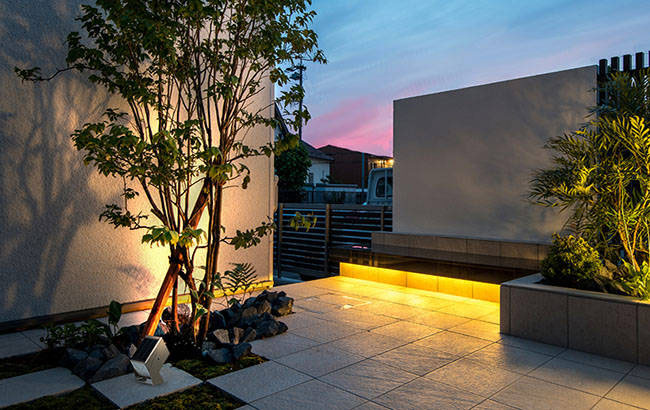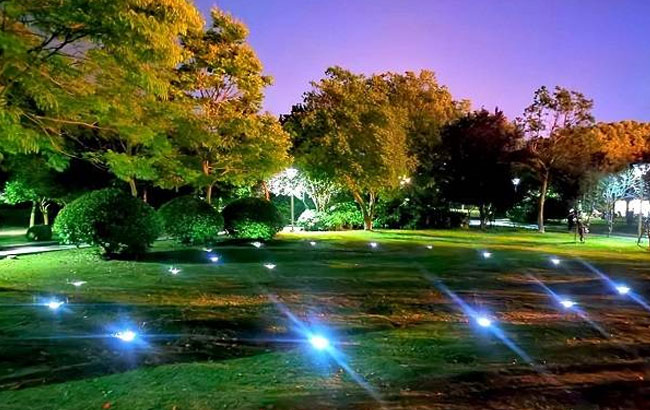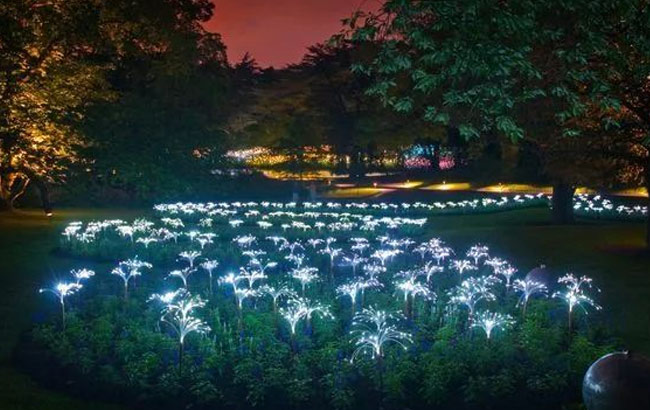Plant landscape lighting design
Plant landscape is one of the common important landscapes in gardens. The lighting design of plant landscape directly affects the overall garden landscape lighting effect. Plant landscape lighting is mainly used for night lighting and presents the characteristics of plant landscape. Plant landscape lighting design is based on plant height, overall texture and branches and leaves and other characteristics of the selection and control of lamp positions, light sources and lamp beam angles, etc., using suitable lighting methods to create the visual effects we want and create an environmental atmosphere.
Therefore, to do a good job in plant landscape lighting design is not simply to illuminate the plants, but a series of meticulous designs are needed to achieve the lighting effect we want. Before proceeding with the plant landscape lighting design, we must first understand the design principles and lighting methods in order to be more comfortable in the design process.
1. Principles of Plant Landscape Lighting Design
People-oriented: Lighting design should be people-oriented, starting from people's physiological and psychological needs, selecting appropriate light sources, light colors, determining reasonable light consumption and illuminance, preventing glare, and eliminating various effects of light pollution on people's psychology and physiology.
Suitable tree and light: Every plant has its own color and shape. The lighting must be adapted to the whole plant. At the same time, attention must be paid to the structure of the tree. For the branches, the light can pass through the canopy to illuminate the trunk and branches of the tree, such as camphor and magnolia, which can achieve better results through upward lighting; and for coniferous species, because the canopy is very dense and close to the ground, such as Cedar also uses spotlights, which will only produce a bright green halo at the bottom of the tree, and the light cannot illuminate the upper part of the canopy. For this type of tree species, spotlights need to be used to illuminate the entire canopy outside the canopy.

Seasonal changes: The landscape of garden plants in different weather, seasons and time periods shows different sceneries. Flower buds bloom in spring, luxuriant branches and leaves in summer, fruitful autumn fruits, and horned dragon branches in winter. Lighting must also adapt to this change and make corresponding adjustments, such as spring, summer, and autumn can highlight the crown and leaves, while in winter, it can highlight the branches and trunks to highlight the atmosphere of different seasons.
Ecological protection: Landscape lighting of garden plants must consider the impact on the ecological environment. Strong lights at night can often disrupt the day and night life of plants and animals and the rhythm of the biological clocks of sunrise and night rest, serious pests will be formed, and the ecological balance of the region will be damaged. Abnormal morphology of fallen leaves, etc.
2. Common lighting methods for plant landscapes
Factors such as the illumination method, projection angle, and lamp selection used in the landscape lighting design of plant landscape lighting will affect the final presentation effect, which means that the effect we see may be finalized after a series of complicated design processes. For plant landscapes, we usually use the following lighting methods.

Projection lighting: The luminaire illuminates the plants vertically from a long distance and provides uniform lighting on the surface of the plants. It can be bright or soft. The specific usage guidelines are for the purpose of achieving the overall composition.
Glance lighting: place the lamps closer to the plants than the surface lighting, and illuminate the plants "tangentially" to emphasize the texture. According to the size of the plants, choose lamps with a narrow emission angle, and sometimes need to install optical prism glass and other accessories for the lamps. , The formation of "fan surface light", the greater use of light.
Internal lighting: For plants with more gaps between the branches, the lamps can be placed at the lower part of the branches close to or close to the ground to create a glowing effect of branches and leaves.
Silhouette lighting: Put the lamps behind the plants to illuminate the wall behind the plants. The lighting highlights the shape of the plants, but does not have texture, color or details, but emphasizes the performance of branches and forms. This needs to be used Silhouette lighting plants must have a strong sense of shape shaping.

For plant landscape lighting, in the process of lighting design, attention should be paid to highlighting the characteristics of plants, while not neglecting the overall coordination of the garden, as well as the coordination between the part and the whole. Solaraxy Smart Lighting focuses on landscape lighting and outdoor smart lighting. Commercial lighting products (smart solar lamps) and ordinary solar lamps developed and produced can be widely used in villa courtyards, garden landscapes, villas, hotels, clubs, parks, roads, islands, etc. Among them, the smart solar lamps can be controlled by the mobile phone APP smart lighting system, which can realize Bluetooth MAS one-key networking, remote control, timing, dimming, group control, scene linkage and other functions.
- 下一页: High Power LED Chips







